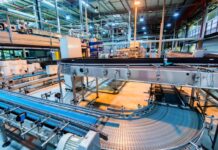
Article by Gareth Foster, Head of Industrial, Logistics & Consumer, Endava
Mining is often seen as a traditional, slow-moving sector, but right now it is undergoing a high-tech revolution. Innovation is not just a matter of staying technologically ahead; it is crucial for ensuring the safety of workers and enhancing operational efficiency.
As the mining industry advances, key innovations such as autonomous hardware, AI-enhanced data platforms, and advanced tracking systems are set to revolutionise operations, making them safer, more efficient and more cost-effective.
Leveraging autonomous hardware for optimal efficiency
Although the initial investment and maintenance costs can be high, the benefits of autonomous systems in mining are significant. Autonomous tools, vehicles and drones are transforming mining operations, making them safer and more efficient.
For instance, companies like Rio Tinto are leading the charge by using autonomous trucks, drills and trains in Australia’s Pilbara region. These systems reduce the need for humans to work in dangerous environments whilst also improving efficiency and lowering costs. As well as cutting down the risk of accidents, these technologies also operate with a precision and consistency that human labour cannot match, leading to increased productivity and reduced operational errors.
The integration of AI in these autonomous systems promises even greater efficiencies. AI can optimise routes, predict maintenance needs and adapt to changing conditions in real time, which not only boosts efficiency but also prolongs the lifespan of equipment. These advancements are not just beneficial but essential for the future of mining, as they ensure operations become more streamlined, cost-effective and safe over time.
Safety with real-time tracking systems
Safety remains the top priority in mining. In addition to the increased use of autonomy mentioned above, modern mines now use advanced real-time tracking systems that provide detailed information about the location of people and equipment. Deployed extensively across Australian mines, these systems enhance operational safety and efficiency and are invaluable in emergencies, enabling accurate coordination of rescue efforts and rapid response to assist trapped or injured workers and potentially saving lives.
In daily operations, these systems optimise equipment use, reduce idle times, and prevent bottlenecks. This boosts productivity, minimises wear and tear and lowers maintenance costs. The data collected from these systems can be analysed to identify patterns and potential safety hazards, allowing mining companies to address risks proactively and foster a safer working environment.
Enhancing decision-making with advanced data platforms
Effective data management, enhanced by artificial intelligence, is vital for making informed decisions, optimising mining processes and ensuring regulatory compliance. Several Australian companies are making significant strides in developing and using technologies that manage and analyse large amounts of data. By investing in advanced solutions, they are improving operational efficiency, enhancing environmental monitoring and enabling predictive analytics. These technologies streamline mining processes, reduce costs and better track environmental impacts to ensure compliance with regulations.
Additionally, predictive analytics allows companies to foresee and address potential issues before they arise, which is crucial for effective maintenance planning and overall operational stability.
Considering ESG for the future of mining operations
Integrating Environmental, Social, and Governance (ESG) strategies such as conservation, social responsibility, and strong governance principles into mining operations is essential for sustainability and responsible business practices. A strong focus on ESG can help organisations reduce their environmental impact, engage with local communities, support indigenous rights and ensure ethical and transparent corporate governance.
Enhancing data security and management systems is crucial for protecting sensitive ESG data, ensuring compliance with privacy regulations and building trust. Meanwhile, utilising cloud infrastructure can streamline data storage and accessibility while reducing the environmental impact of on-premise data centres, and developing agile enterprise architecture can adapt to evolving ESG requirements and seamlessly integrate sustainable practices into mining operations.
Technology is shaping the future of the mining industry by making operations more efficient and safer. As mining companies explore and implement new technologies, they are setting the stage for significant growth and sustainability in the sector.




















